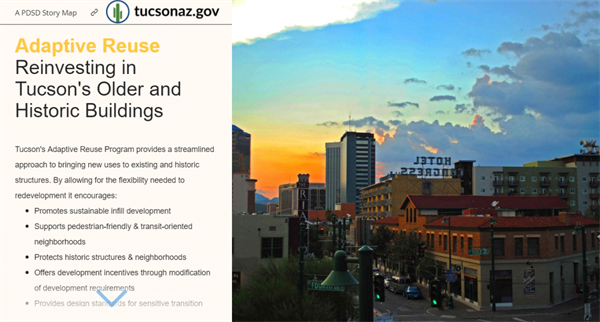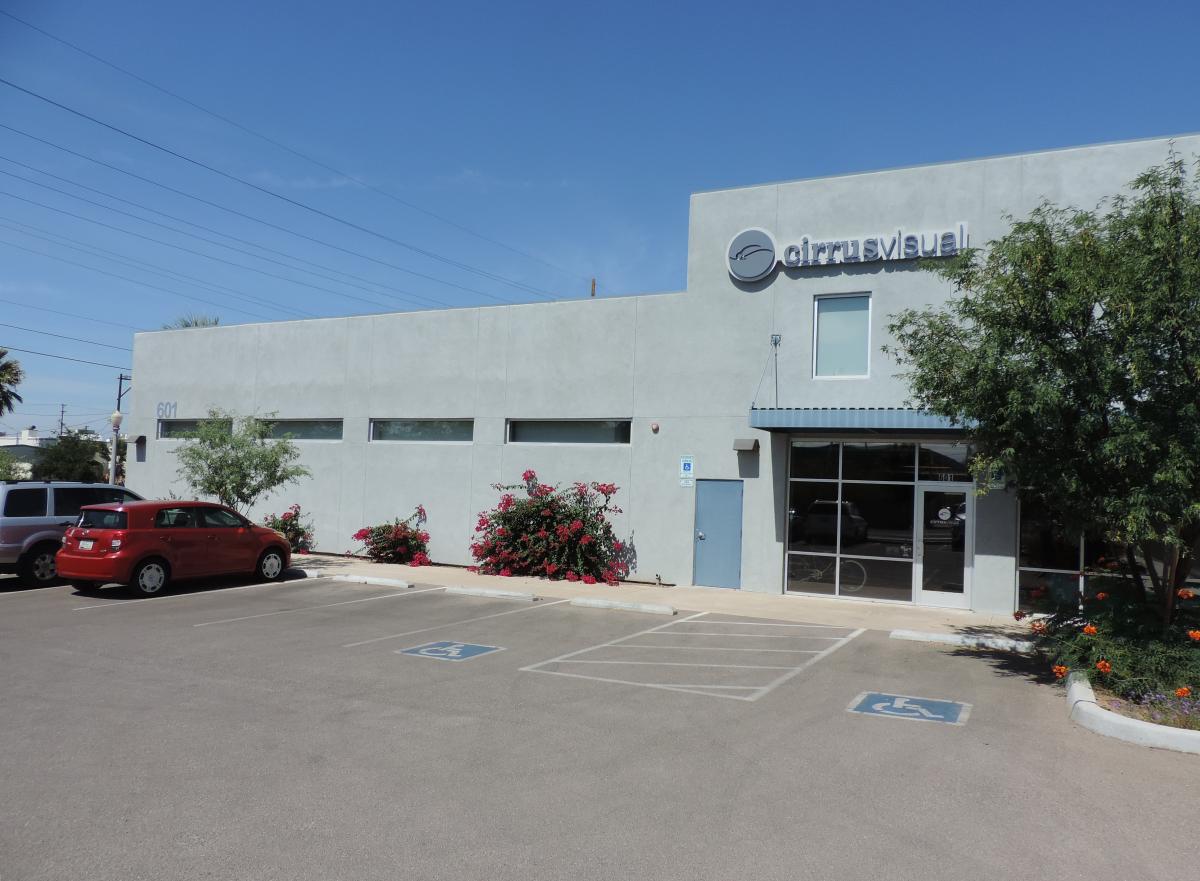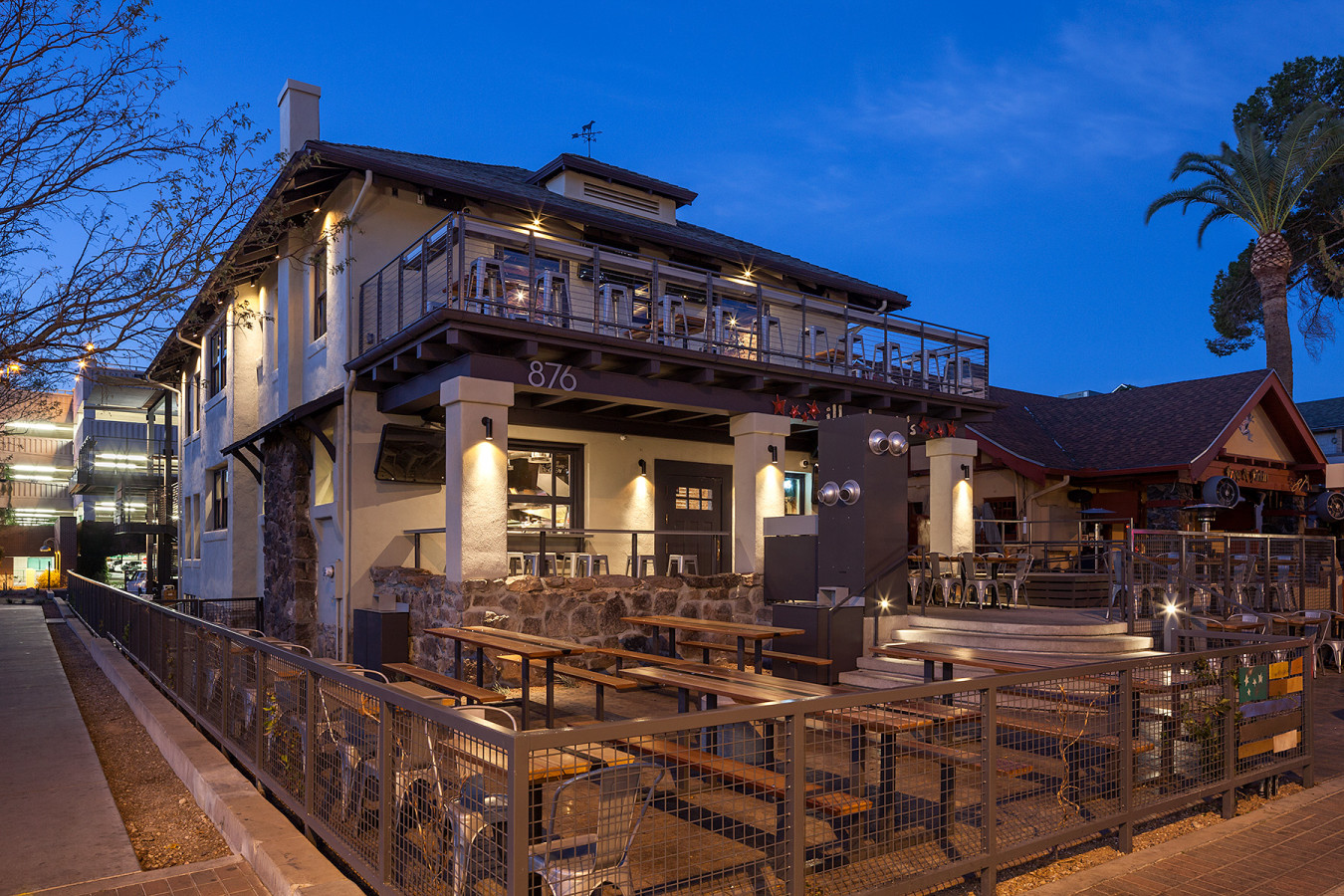Adaptive Reuse
December 2024
Proposed changes to the City’s regulations for adaptive reuse and multifamily development were approved by Mayor and Council during their meeting on December 10, 2024. These amendments were prompted by the passage of House Bill (HB) 2297 by the State of Arizona, which mandates compliance with specific standards for adaptive reuse and multifamily projects.
The new regulations, effective January 9, 2025, permit multifamily residential development or adaptive reuse for at least 10% of all existing commercial, office, or mixed-use buildings, provided the buildings are deemed economically or functionally obsolete, by right.
October 2024
The City of Tucson Planning and Development Services Department (PDSD) is proposing changes to Tucson’s adaptive reuse/multifamily development regulations. This is in response to the Arizona State Legislature passing of HB2297, requiring at least 10% of existing commercial, office, or mixed-use buildings to allow multi-family residential development or adaptive reuse by January 1, 2025.
What is Adaptive Reuse? Adaptive reuse means converting an existing building from the use for which it was constructed to a new use by maintaining some or all of the elements of the building.
City of Tucson's Mayor and Council have adopted local codes permitting reuse and reinvestment in older, nonconforming buildings, but the new State legislation requires additional updates. On June 18, 2024, the Mayor and Council directed staff to amend City codes to align with the State’s municipal zoning requirements.
Provide Written Comments
Watch the October 15, 2024 meeting video:
Review October 15, 2024 slides:

PREVIOUS
The Adaptive Reuse Toolkit provides a streamlined approach to bringing new uses to existing and historic structures.
Adaptive Reuse Story Map

The City of Tucson launched its Adaptive Reuse Pilot Program in 2017 to encourage reinvestment throughout the City in the form of adaptive reuse of existing buildings. The program draws on supporting research (“Older, Smaller, Better in Tucson”) and successful programs in other cities, particularly Phoenix’s Adaptive Reuse Program, to provide a suite of incentives and code relief tools for the reuse of existing buildings in Tucson.
This story map is meant to highlight the Adaptive Reuse Program by both educating people about what adaptive reuse is as well as show casing good examples in Tucson.
Background
The City of Tucson launched its Adaptive Reuse Pilot Program in 2017 to encourage reinvestment throughout the City in the form of adaptive reuse of existing buildings. The program draws on supporting research (“Older, Smaller, Better in Tucson”) and successful programs in other cities, particularly Phoenix’s Adaptive Reuse Program, to provide a suite of incentives and code relief tools for the reuse of existing buildings in Tucson.
Link to Dec 6, 2016 Mayor and Council Memorandum describing the Adaptive Reuse Pilot Program(PDF, 2MB)
Link to "Older Smaller Better in Tucson: Measuring how the character of buildings and blocks influences urban vitality in a Southwestern City"
How it Works
Projects identified as Adaptive Reuse benefit from:
- Dedicated Lead Planner to facilitate project development
- Project-specific checklist
- Application of available building code and zoning process relief tools for: parking, setbacks, density, height, landscaping, screening
- Staff assistance with developing an Individual Parking Plan
- Concurrent processes for development review and zoning relief
- Allowance for change of use following less-restrictive standards if new use is allowed by zoning
- Sidewalk modifications
- Change of use without improvements
- Building height modifications
- Economic incentives may be available for projects located within redevelopment districts
Eligible Projects:
- Reuse of an existing structure for a new purpose
- Resulting use of the building will be commercial in nature (business, multi-family residential, or mixed use)
- Existing structure was permitted prior to 2000
- Project will not cause the building to be delisted or ineligible for the National Register of Historic Places
- Project will provide a community benefit and acceptable use (excluded uses include pawn shops, adult businesses, and student housing/group dwellings)
For more information or to discuss a potential adaptive reuse project, please contact: Nicholas Ross, Lead Planner (520) 837-4029 Nicholas.Ross@tucsonaz.gov
Examples of Adaptive Reuse projects in Tucson:
Cirrus Visual
From Industrial to Office
Tools Used:
The following modifications were made using the Infill Incentive District (IID):
- Reduction of required parking
- Replacement of required screen wall with canopy trees
- Modification of sold waste container requirements
- Elimination of the sidewalk scupper at existing rain drain
- Reduction of west sidewalk width

Illegal Pete's
From Residential to Restaurant
Tools Used:
The following modifications were made using the Main Gate Urban Overlay District (UOD):
- Reduction of required parking
- Reduction of required setbacks

(Image Credit: Robpaulus.com)
5 Points Market and Restaurant
Tools Used:
- Reduction of required parking through an Individual Parking Plan (IPP)

ATL Wings
From Automotive Repair to Restaurant
Tools Used:
- Landscape modification within a Historic Preservation Zone (HPZ) per UDC sections 7.6.4.C.4.e and 7.6.5.G.3.
- Off-site parking modification

Other Notable Tucson Adaptive Reuse Projects:
- Monterey Court
- Ice House Lofts
- Graze
- Mister Car Wash (both locations)
- Thunder Canyon Brewery
- King Warehouse
- Crossfit Milo
- HardVolume Crossfit
- Public Brewhouse
- Crooked Tooth Brewing Co.
- Royal Room
- Anello
- Barrio Brewery
- MOCA
- Jewish History Museum
- Lindy's
- The Barn
- Isabella's Ice Cream
- Teen Project
- The Brings Building
For Information, Contact: Nicholas Ross, Lead Planner (520) 837-4029 Nicholas.Ross@tucsonaz.gov